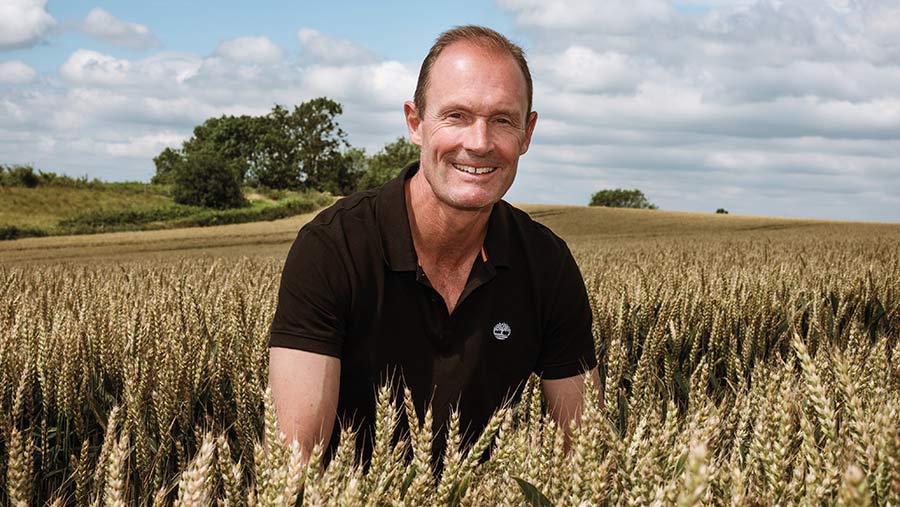Farmer Focus: Damp harvest sees return of straw raking
 © MAG/Colin Miller
© MAG/Colin Miller With the changing weather fortunes we ended up harvesting the driest wheat at only a slightly higher moisture than the wettest oilseed rape.
Hagbergs were great, specific weights decent, but well below last year’s highs, and proteins way down.
In a way you may say it serves us right for gradually reducing total nitrogen (N) rates over many years now, but last year they were OK at only slightly higher N levels, so what happened this year?
A cold, wet spring with little sun? Maybe I’ll have to follow up more on protein prediction models, but this year any late Nufol applications would actually have been wasted, such were the final proteins.
See also: Five-year farm trial aims to find ultimate soil rejuvenator
Another technique I am retrying is straw raking. I had one some years ago when I started direct-drilling, but ditched it in favour of very shallow crosscutter discs.
However, such was the dampness of the conditions when we harvested the spring barley that the straw chop and spread were so poor they risk affecting next year’s crops.
I have found a second-hand one locally and will see if it can help with residue distribution while avoiding any pulling out of the stubble.
I really want to own as little machinery as possible, but every year presents different challenges, particularly with the seemingly more extreme weather – farming is a complicated business.
Perhaps artificial intelligence could help? I asked a popular site to write this article for me and it produced some vague stuff about embracing the change of colours and evolving with the cycles of nature.
But could it offer anything helpful? I asked how to stop flea beetle and it informed me that there are OSR varieties that have been bred to offer some resistance. After further interrogation, it swiftly listed five such varieties!
I’ve heard of work going on in this area, but I wonder if it is to be believed… and what it might know about wheat pre-ems?


